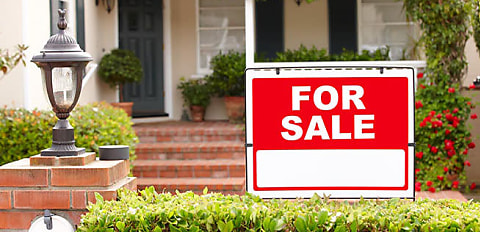New data from CoreLogic has shown that the value of Australian houses has dropped by a record 8.40 per cent since the property market hit its peak in May last year.
According to the property data and analytics company, the Daily Home Value Index (HVI) hit a new record on Saturday (7 January 2023), after peaking on 7 May 2022.
The researchers assessed changes in the daily HVI and found that the change between May 2022 between January 2023 was greater than the previous record downturn of 8.38 per cent between October 2017 and June 2019, which came about largely as a result of tighter lending standards, according to CoreLogic.
CoreLogic flagged that this current downturn has taken place in less than nine months with the bottom of the trough yet to come (given that economists expect further price falls in the coming months as higher interest rates and a slowing economic environment take hold).
Australia’s three largest capital cities (Sydney, Melbourne, and Brisbane), which also have the largest weighting in the national home value index, have contributed most to the new record drop in home values with both Sydney and Brisbane recording double-digit falls from the peak.
According to the company, the main driver of the record drop in values has been a record run of rate hikes. Indeed, the cash rate has risen by 300 bps in the past eight months as the Reserve Bank of Australia moves out of its pandemic-driven emergency settings and works to curb inflation.
Eliza Owen, CoreLogic’s head of residential research, Australia, suggested that the rampant rate hikes have therefore resulted in a rapid reduction in borrowing capacity, lowering the amount buyers can offer for homes and potentially dissuading potential buyers from entering the market.
She added: “Australians are also more indebted today than through historic periods of rate rises, with the latest Reserve Bank of Australia’s estimate of housing debt-to-income ratio sitting at 188.5 per cent. A decade ago this figure was 162.0 per cent and in 2002 the ratio was 130.2 per cent.
“Higher household indebtedness may have increased the sensitivity of housing values to interest rate rises,” while higher inflationary pressures, combined with a post-lockdown surge in spending, have also “eroded household savings, which could be utilised for a home loan deposit.
“This trend is also being reflected in low consumer sentiment figures, which has plunged to near-recessionary levels and traditionally coincides with fewer home sales.”
While the 8.4 per cent drop has set a new record, it comes off a particularly high base. For example, property values rose 28.9 per cent between September 2020 and May 2022, which was the fastest rise in home values nationally on record.
As such, while the drop in values has set a new record, home values are still around 16.0 per cent higher than they were five years ago, and 59.8 per cent higher than they were 10 years ago.
Looking forward, Ms Owen said she expected housing market conditions to remain soft over the coming months.
“The underlying cash rate is likely to see further increases in 2023, with market expectations pricing a peak of around 4 per cent, while the median forecast from Australian economists is lower at 3.6 per cent,” she said.
“Ongoing increases in interest rates will further erode the borrowing capacity, and likely prolong the country’s housing downturn until interest rates stabilise.”
Property prices dropped 5.3% in 2022
The daily HVI data comes off the back of separate CoreLogic research that revealed property values fell 5.3 per cent in the calendar year 2022.
According to the company’s national HVI, home values fell 1.1 per cent in the last month of the year. This meant that in the 12 months to December, values were down 5.3 per cent, the most significant calendar year decline since the global financial crisis (GDC) in 2008 when values were down 6.4 per cent.
Sydney and Melbourne saw the largest annual fall at 12.1 per cent and 8.1 per cent. Hobart, the ACT, and Brisbane also recorded an annual drop in housing values, falling by 6.9 per cent, 3.3 per cent, and 1.1 per cent, respectively.
However, three capitals recorded values rise over 2022 with Adelaide at 10.1 per cent, Darwin at 4.3 per cent, and Perth at 3.6 per cent.
[Related: Property outlook warns of downside risks despite end-of-year slowdown]
